How MPM works?MPM measures impedance changes in selected body parts. It uses three independent sources of subliminal and completely safe current (mA units) at various frequencies. This unique solution allows very sensitive mapping of impedance of a human body at up to 18 points without interferences and distortions. For older or stiffness and sclerotic arteries, the speed of propagation of a pressure wave is significantly higher. |

|
As the current at a frequency of 50 to 100 kHz finds its way primarily through the bloodstream, the measured impedance varies with changes of the volume of blood in arteries. An impedance change includes two components, (1) periodic, which is induced by periodical contractions of the heart, and (2) non-periodic, slower one, which is caused by changes of blood distribution as a result of different excitations. MPM thus provides information on distribution of blood in the limbs, the trunk and the neck, and, at the same time, it allows to measure the speed of propagation of a pressure wave in the arterial system. The speed of propagation of a pressure wave is a parameter important for assessment of the state of the arterial system.
Three source currents of different frequencies (see fig.) allow precise measurement of the impedance curve at up to 18 points of a human body (see fig.) |
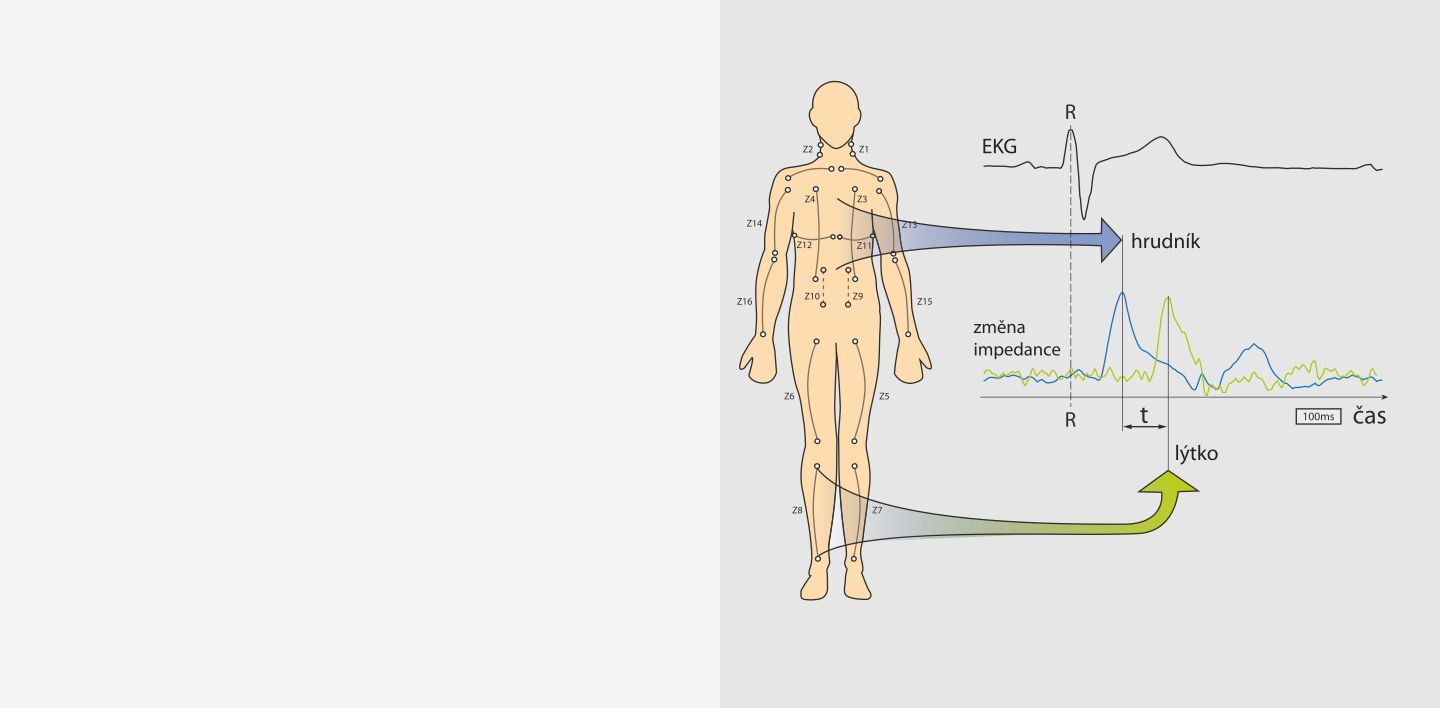
|
An example of delay of a pressure wave between the chest and the calf. In healthy and flexible arteries, such delay is lower.
The value of the speed of a pressure wave is affected, in particular, by smoking, overweight, long-term high blood pressure, genetic predispositions or diabetes. |
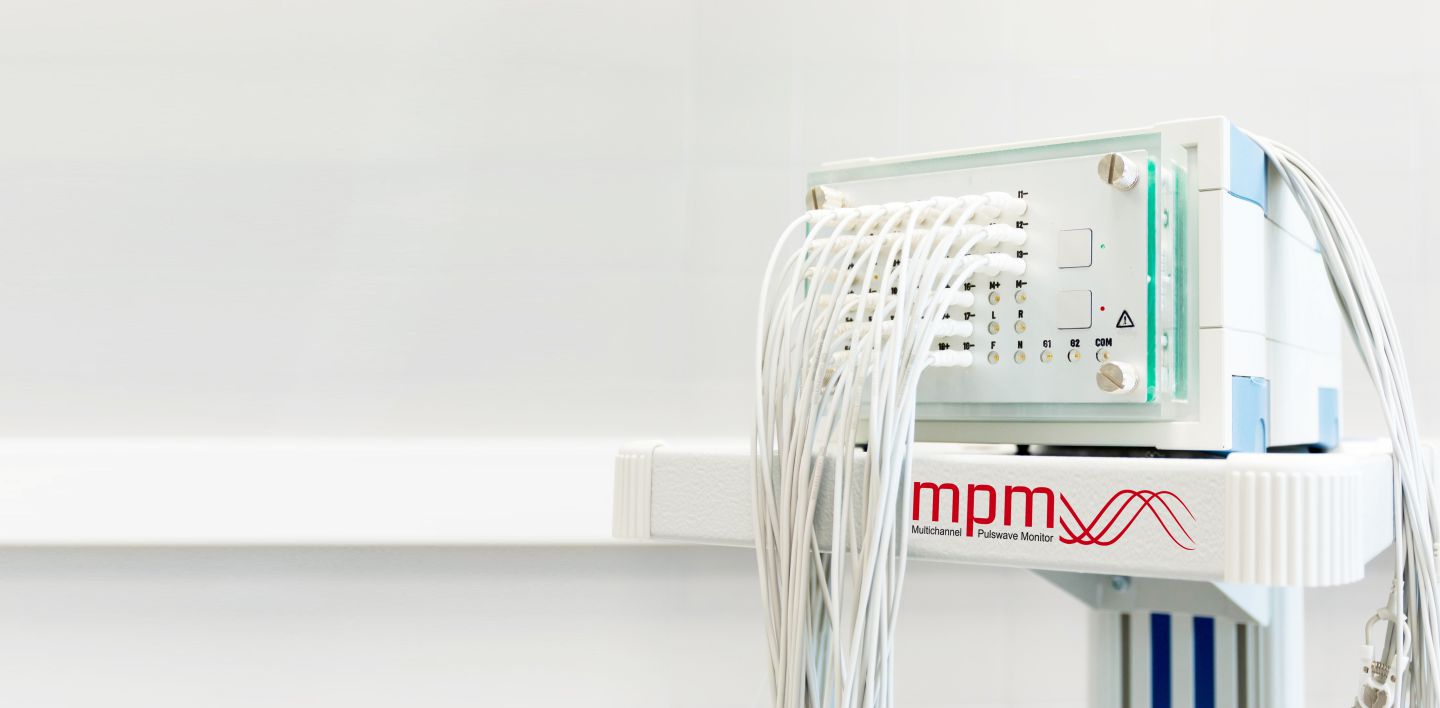
|
MPM differs from conventional diagnostic devices mainly by the fact that it is the only non-invasive device, which allows to map blood distribution and properties of blood vessels at all of the measured points at the same time, such as in the chest, both the upper and lower limbs and the neck.
However, that is not all. MPM is even able to measure at various stress and strain conditions, such as during ergometry, spinning, changes in body positions, or mental stress. Such changes in blood circulation under these conditions are essential for accurate and sensitive diagnostics. |

What does MPM tell us?MPM is equipped with a modern, interactive and intuitive interface with a powerful computational unit, which uses parallel computing. Its large touch screen provides maximum comfort when setting measurement, monitoring its progress and evaluating it in real time. Ease of operation is supported by vast possibilities of diagnostic outputs, for example, separate evaluation of various phases of measurement and body parts with clear graphical interpretation of the results. MPM can be used primarily for rapid and non-invasive diagnostics of vascular elasticity and thus age of the arterial system. For example, a strong 50-year old smoker will most likely have significantly reduced eleasticity of arteries and their age will correspond to a much older person. However, it depends on genetic predispositions and other factors, therefore, potential risks are individual. |
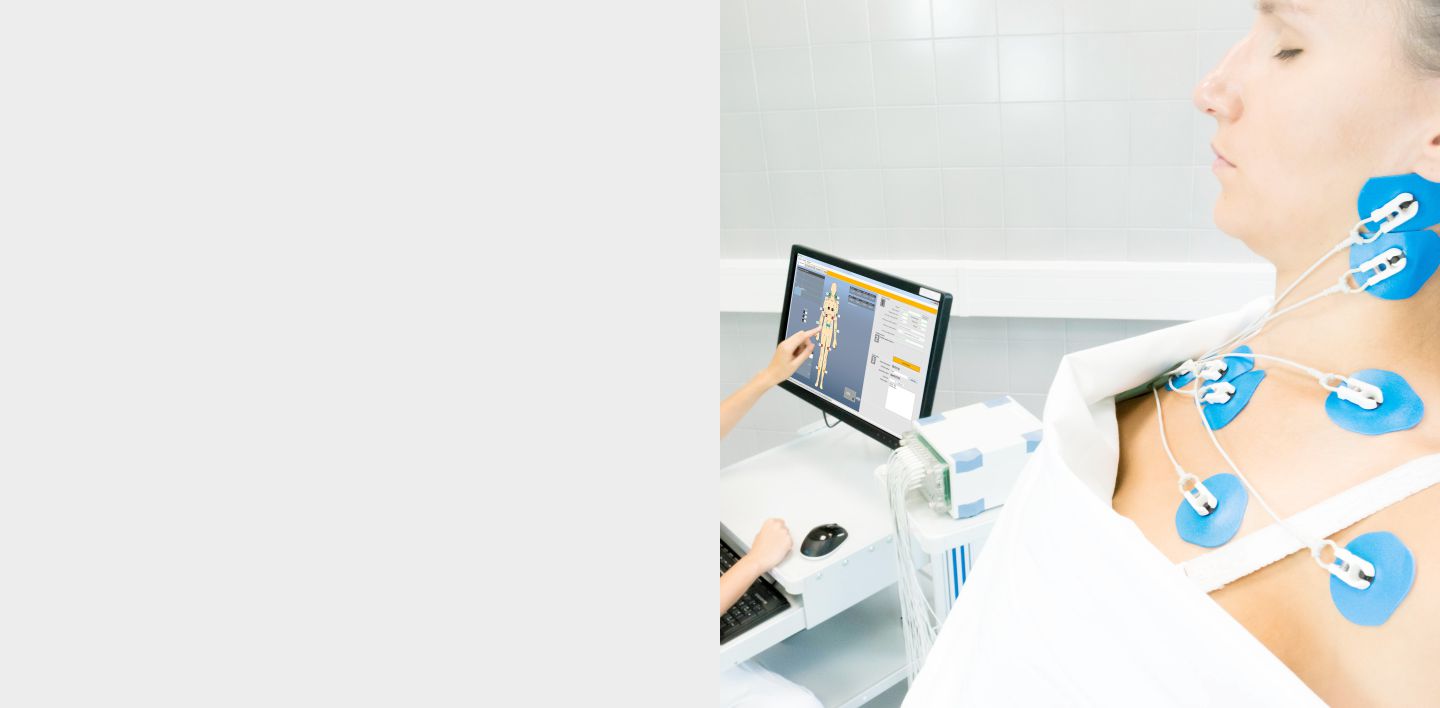
| Let’s consider results of a simple test: We would like to know the state of arteries in the lower limbs as they best reflect pathological changes in the arterial system. We measure 5 minutes in the supine position with a body tilted at the angle of 75 degrees. When tilted or standing, blood accumulates in the lower limbs. The hydrostatic pressure increases, arteries expand and lose their flexibility. This significantly increases the speed of propagation of pressure waves. This increase, compared to the horizontal position, is for healthy arteries almost double of the original value. But for a smoker, the speed changes much less, only by about 10 to 20 percent. A smaller difference means that, even in a horizontal position, arteries of the lower limbs were stiff with high speed of propagation of pressure waves. The mere decline by 20 percent and less is already a strong warning sing and a recommendation to immediately change the lifestyle. A great advantage of this test is evaluation of the relative changes, which allow to eliminate possible inaccuracies in determination of the absolute speed of a pressure wave. It can be caused, for example, by fluctuations in blood pressure. |
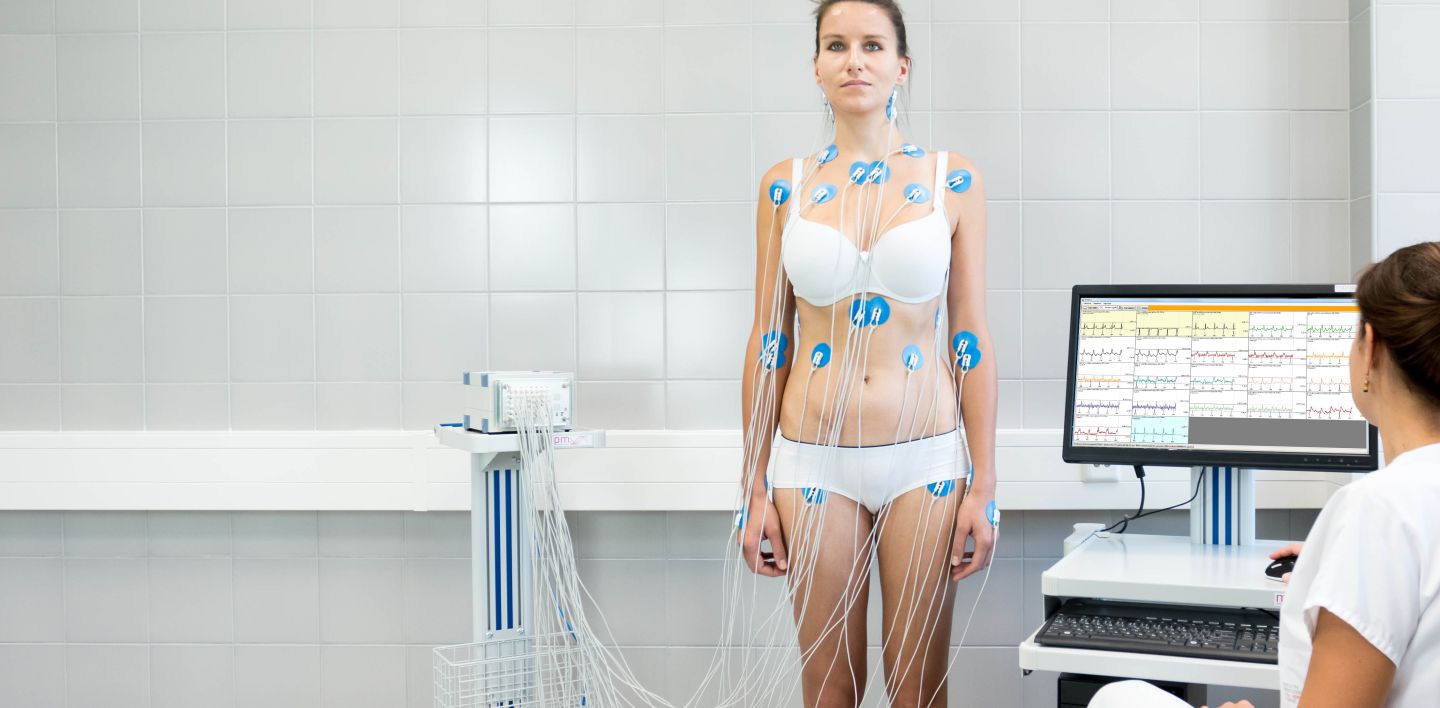
|
The technology MPM enables, through a simple test, to compare flexibility and throughput of arteries in the lower limbs in a lying and standing position and, based on differences, to establish a corresponding age and relevant risks. It can also sensitively assess subsequent positive impacts of a lifestyle change. Therefore, the technology MPM is suitable for clinical assessment of a state and risks of the arterial system, as well as for a simple and inexpensive preventive and informative examination. The concept of MPM and availability of data in the original measured quality allows to use this technology also for research and experimental purposes at universities and academic institutes. |
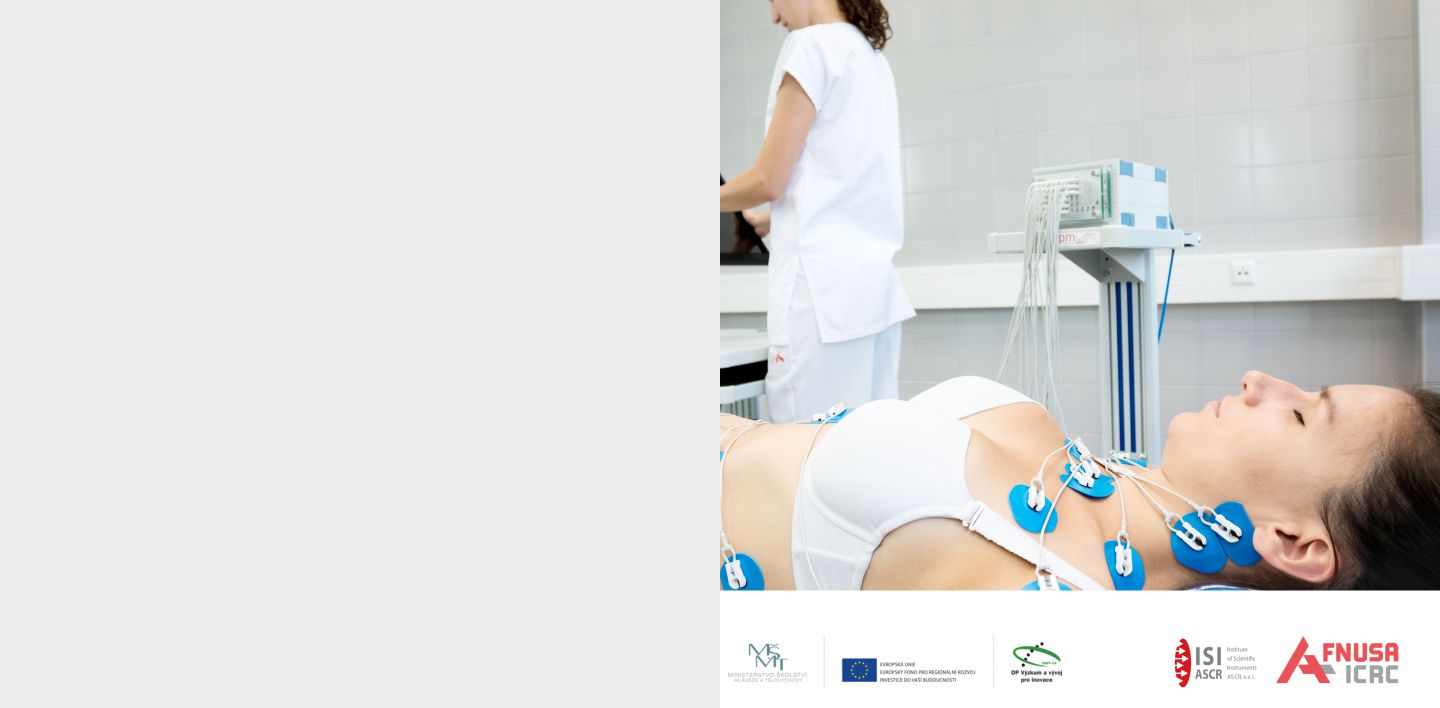
|
Technological background MPM is one of the projects, which has been implemented at the Institute of Scientific Instruments, together with the St. Anne's University Hospital in Brno. A long-term interdisciplinary cooperation of technical and medical teams has the common goal to develop original technologies and diagnostic methods bringing new information and allowing both basic research of properties of a human body and effective clinical diagnostics. More information about the project PRECEDENCE The multichannel whole-body impedance plethysmography (MPM - Multichannel Pulsewave Monitor) represents an original technological solution for non-invasive examination of properties of the vascular system. The technology MPM was designed and implemented at the Institute of Scientific Instruments of the Academy of Science of the Czech Republic and the International Clinical Research Centre of the St. Anne's University Hospital in Brno. Development of the commercially available device was conducted with financial support of the European project: Title: PRECEDENCE, the Operational Programme of Research and Development for Innovations, priority axis: 5.3 - Commercialization and Popularization of Science and Research, area of support: 5.3.1 - Commercialization of Results of Research Organisations and Protection of their Intellectual Property, registration number: CZ.1.05/3.1.00/13.0292. Articles and references: ► Influence of tilt load on pulse wave velocity in the lower limbs, 2014 8th Conference of the European Study Group on ► Measurement of Pulse Wave Velocity during Valsalva and Mueller Maneuvers by Whole Body Impedance Monitor For more information, visit www.isibrno.cz or contact us here. |